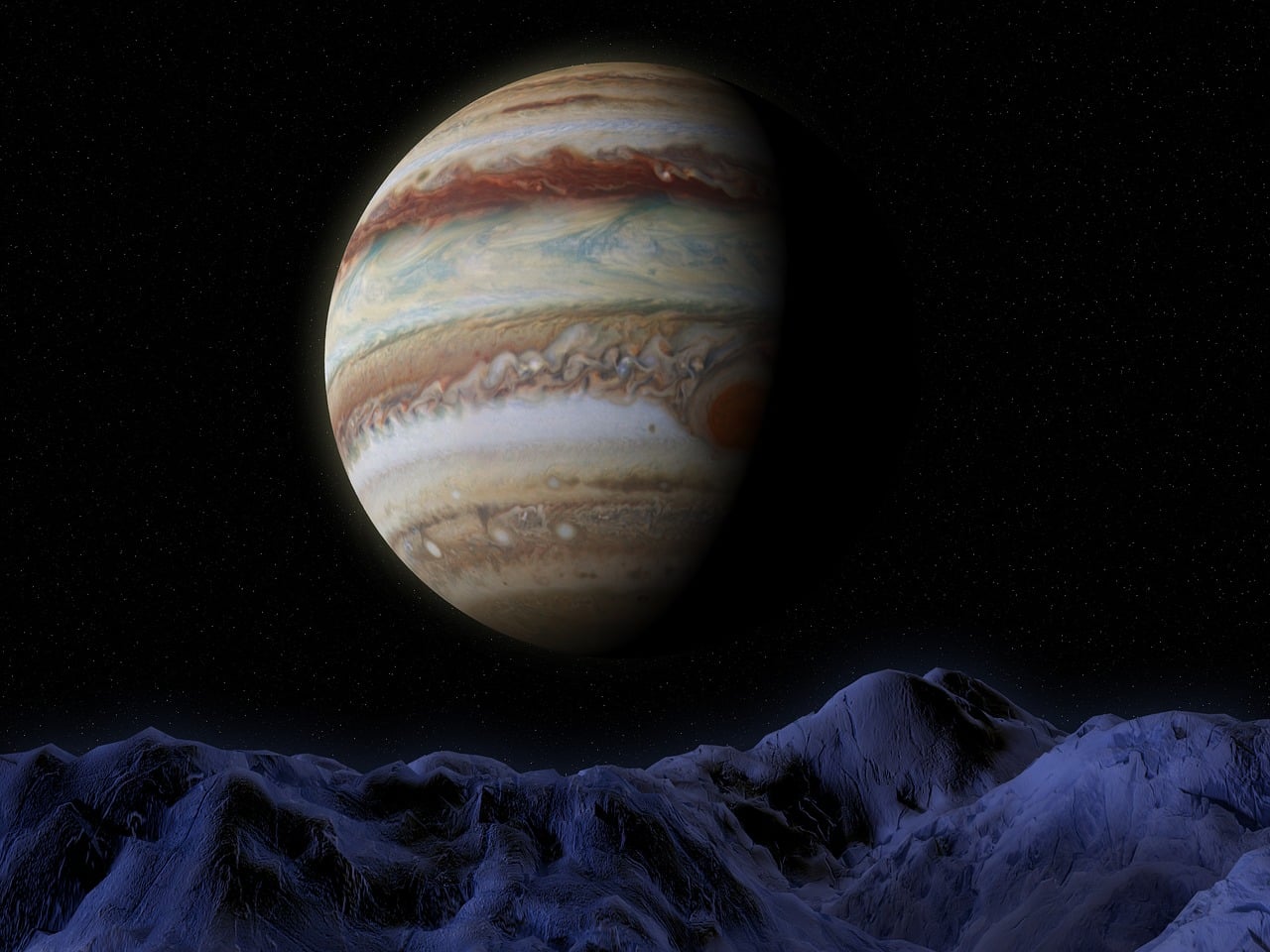When the solar system was still forming, the cosmic dust, planets and satellites were in a chaotic state. Some planets experienced more chaotic formation than others. One of the theories suggests that the moon was formed when Earth collided with another, likely Mars-sized object, and now new data from the Juno mission hints at a young Jupiter colliding with a massive newborn planet.
A new study conducted by astronomers from Rice University and China’s Sun Yat-sen University suggests that Jupiter’s gravity was impacted by a head-on collision between a young Jupiter and another planetary body.
The head-on collision between the two young planets occurred in the early solar system roughly 4.5 billion years ago. The collision can also be traced using NASA’s Juno spacecraft which orbits Jupiter. The team’s findings were published in the journal Nature.
“This is puzzling,” Rice astronomer and study co-author Andrea Isella said in a statement. “It suggests that something happened that stirred up the core, and that’s where the giant impact comes into play.”
Isella said in a statement that the team was doubtful when the lead author Shang-Fei Liu suggested that the data read by Juno could be explained by an impact which stirred up the core of a young Jupiter.
“It sounded very unlikely to me,” Isella recalled, “like a one-in-a-trillion probability. But Shang-Fei convinced me, by shear calculation, that this was not so improbable.”
The team conducted computer simulations that showed that a fast growing Jupiter could have perturbed the orbits of other young planets, known as protoplanets, which could have led to a massive collision during the early stages of the planet. Liu ran 3-D computer models that increased the probability of a collision affecting Jupiter’s core.
“Because it’s dense, and it comes in with a lot of energy, the impactor would be like a bullet that goes through the atmosphere and hits the core head-on,” Isella said. “Before impact, you have a very dense core, surrounded by atmosphere. The head-on impact spreads things out, diluting the core.”
Scientists suggest that the young Jupiter collision happened at a grazing angle which resulted in the planet’s gravity being impacted, trapping the gravity into the planet’s core. The team also suggests that embryo planets that are as massive as Earth for example, could integrate into Jupiter’s thick atmosphere and become trapped inside of it.
“The only scenario that resulted in a core-density profile similar to what Juno measures today is a head-on impact with a planetary embryo about 10 times more massive than Earth,” Liu said.
Based on the calculations the team made, if the impact between the massive newborn planet occurred 4.5 billion years ago, which suggests that it happened at the beginning of the solar system, it could take many billions of years for the heavy material that impacted Jupiter to settle into the planetary core.
“This is still a new field, so the results are far from solid, but as some people have been looking for planets around distant stars, they sometimes see infrared emissions that disappear after a few years,” Isella said. “One idea is that if you are looking at a star as two rocky planets collide head-on and shatter, you could create a cloud of dust that absorbs stellar light and reemits it. So, you kind of see a flash, in the sense that now you have this cloud of dust that emits light. And then after some time, the dust dissipates and that emission goes away.”





